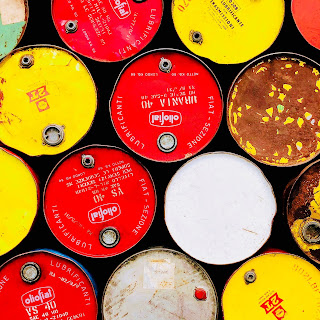Immediate Outlook on U.S. Shale is Not Very Bright
From Reuters:
And then there is this, from Forbes:
U.S. shale oil drillers could scale back investment in production more quickly than previously expected this year after prices slid for what had been a lucrative by-product of their operations.
Oil producers have already taken a hit from the fall in global oil and gas prices as China’s coronavirus outbreak destroys demand in the world’s second-largest economy. Benchmark U.S. crude prices CLc1 have fallen about 12 percent to date this year.
Many shale producers had announced reductions in their capital expenditures even before the coronavirus outbreak due to lower oil prices in the second half of 2019. Lower spending is expected to slow the rate of shale growth, although production remains on course to reach a new record in 2020.
Shale producers now face another blow to their revenues because prices for natural gas liquids (NGLs), which include propane and butane, have also fallen. NGLs had helped prop up their bottom lines, providing lucrative returns when oil and gas margins were thin.
Shale producer Marathon Oil Corp (MRO.N) last week said it would cut gas drilling in Oklahoma “largely in response to the dramatic weakness in gas and NGL pricing relative to oil” and shift resources to richer crude-oil areas.Click here to read more.
And then there is this, from Forbes:
I’m no fan of alarmism, whether it be about energy, the environment or any other subject, but the situation for the domestic oil and gas industry has grown somewhat alarming over the past two months. Since early January the S&P Oil & Gas Index has plunged 32%. Investors appear convinced not just that there is oodles of oil in the world but that the spread of Coronavirus brings the risk of economic flatlining in the biggest growth market for oil — China.
With the virus set to spread and the OPEC+ group running out of options to contain the oil glut, the price of West Texas Intermediate (WTI) crashed through the important $50 level this week, and promises to slide further. Chevron yesterday sent home 300 workers in London over virus fears. Thus, a year that began with a fairly promising outlook is rapidly devolving into one that will present a fight for survival for some domestic producers.
The statement on Tuesday by Dr. Nancy Messonnier, an official at the U.S. Centers for Disease Control and Prevention (CDC), that spread of the Coronavirus in the U.S. was “inevitable,” and that citizens here should begin preparing for an outbreak will certainly work to further inflame the markets. President Donald Trump has reserved television time for a statement designed to calm the situation on Wednesday night, but it could come too late to prevent further disruption in the commodity and financial markets.
Meanwhile, the U.S. market for natural gas remains chronically over-supplied with no real relief in sight. Although the NYMEX price per MMBtu has remained fairly stable during the first two months of the year, it is stable at a price that is far too low for many natural gas producers to remain profitable.
All of these factors now combine to create a precarious situation for heavily-leveraged companies as they head into debt re-determination season. Chesapeake Energy is a good example. When I wrote about that company’s long, difficult struggle to survive last November, Morgan Stanley had just lowered its price target for CHK stock from $2.25 per share to $1.25.Read on by clicking here.


